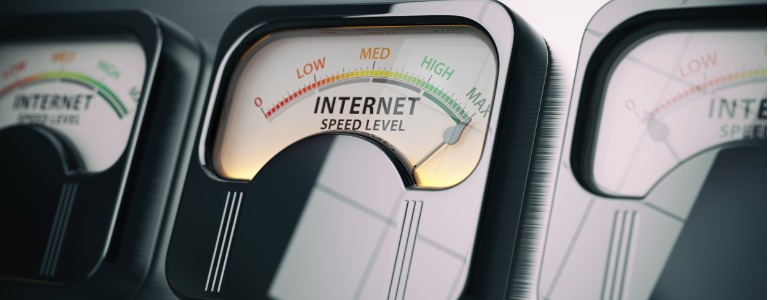Why Ethernet Is the Go-To Tool for Sharing Big Data
It may have been a while since you heard the term Ethernet, but it’s changed a lot since then. It’s evolved from just another way to connect to the internet into a tool for modern business agility and growth. And it helps businesses share Big Data more securely.
Let’s take a look at the changes that have come to Ethernet and Big Data, and how the two work together.
What Is Big Data?
As we’ve discussed before, Big Data is essentially what its name implies: a large data collection of customer behavior patterns. Businesses often collect this information about customers, or potential customers, from point-of-sale records, online or traditional surveys, website forms or other interactions, and internet search habits. Because the data sets are so large and complex, data tools are used to analyze the customer relationship to a business’s product or service, create an algorithm, and then use that information to better market their existing products to consumers and improve future products based on customer feedback.
Ethernet Makes Sharing Big Data Easy
As Big Data’s popularity continues to grow, it’s important that a business can handle the incoming information and disseminate it to the right channels—whether that’s employees across the office, or across the country at branch locations or satellite offices. It’s one way a business stays agile. How is this possible?
Ethernet streamlines network connections with symmetrical speeds, consistent bandwidth and an easy-to-use interface that gives you control over your network so you can react quickly to the competition, market conditions and technology innovation. And it’s capable of high rates of data transmission because of the minimal amount of delay data is subjected to. This low-latency is a significant Quality of Service (QoS) metric that supports high performance across Ethernet-enabled locations using copper or fiber lines for point-to-point connectivity—even during peak usage times. These networks can span across metro areas, intrastate and interstate WAN placements, or be used in a data center connected to multiple locations over a LAN.
Using an Ethernet connection (like a fiber-optic Ethernet Virtual Private Line (EVPL) or Ethernet Local Area Network (E-Lan)), a business can send and receive large files seamlessly in real time and increase its bandwidth needs easily to scale with the business as it grows. This evolution in Ethernet led the Metro Ethernet Forum (MEF) to develop their Carrier Ethernet 2.0 (CE 2.0) certification, which ensures Ethernet services can keep up with the latest technology innovations and data sharing capabilities.
How Ethernet Keeps Big Data Secure
With the number of hacks to sensitive material and attacks on mobile devices increasing almost daily, it’s important that any information shared over an Ethernet connection is secure and protected. Ethernet provides network connections that let users transfer large sets of data. This enables them to back up data in off-site locations where it’s protected against security breaches to a primary data source like a hard drive or server.
With virtual private networks (VPNs) and controlled data sharing, information is protected without affecting your business network’s agility. VPNs increase your ability to comply with regulatory mandates at the state, federal and industry levels. Segmented networks allow users to limit branch locations of multisite businesses from sharing data with each other or with contacts outside of their network.
And believe it or not, Big Data can be its own best way to police what is normal behavior—and what isn’t—early on by using the same data analysis used in determining customer behavior. This allows companies to prepare and inform their intrusion detection systems (IDS) and intrusion prevention systems (IPS) to prevent large-scale data breaches.
How We’re Keeping Big Data Secure
At Frontier, our Ethernet services meet Health Insurance Portability and Accountability Act (HIPAA) standards when it comes to user information. Haven’t heard of HIPAA? Not many people have, but to sum it up, HIPAA was established to keep your electronic health information safe against security hacks and requires companies to ensure they have the proper services in place to protect that data. Otherwise, they’re liable should a security leak or hack put your data at risk.
While it’s geared toward medical information, Frontier guarantees this level of security for all our Ethernet services no matter what industry you’re in.
Ready to get connected to Ethernet? Find out if it’s the right solution for your business.
SOURCES:
https://business.frontier.com/blog/big-data-information-security/
http://pages.business.frontier.com/business-agility.html
http://pages.business.frontier.com/The-Power-of-Ethernet.html
https://www.omnitron-systems.com/carrier-ethernet-learning-center/carrier-ethernet-2-0-overview.php
http://www.computerweekly.com/feature/How-to-tackle-big-data-from-a-security-point-of-view
https://www.hhs.gov/hipaa/for-professionals/security/index.html
Related Posts
-
Why VoIP? Why Now?Imagine if your phone system could easily scale, enable your teams to operate from anywhere,…
-





